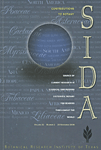Peer-reviewed articles

Abstract
Exposure of Lophophora williamsii to environmental temperatures that remained continuously below freezing, with lows estimated at or below −10 to −15°C for three consecutive days, resulted in freeze-drying of the crowns of some individuals in their natural habitat. I dug up one such plant, brought it back to the lab, planted it in a pot, watered it weekly, and monitored it for signs of life. Eight weeks later new growth was observed as incipient lateral branches from the meristems at areoles on the subterranean portion of the stem. Eleven weeks after replanting and watering, there were four such offsets on the plant. This recovery attests to the resilience of this species in the face of extreme environmental conditions. It also shows that prolonged freezing under dry conditions constitutes a natural mechanism for destruction of the apical meristem. Such meristem destruction by frost would have the same effect on lateral branching as removal of the apical meristem by human harvesting of the crown, and thus provides an alternative mechanism for the formation of pseudocespitose clusters of densely packed individuals in habitat. The concepts of cespitosity (multiple stems on a single plant) and pseudocespitosity (multiple individuals in a dense cluster) are discussed with examples.

Abstract
Over the last four decades, the size and density of populations of Lophophora williamsii (peyote) have diminished markedly in large areas of South Texas where licensed peyote distributors harvest the cactus for ceremonial use by the Native American Church. Part of the problem lies in the fact that some harvesters are cutting plants too low on the subterranean stem or taproot. That practice precludes the regeneration of new stems and ultimately results in the death of the decapitated plants. To address this problem, we describe the anatomical distinctions between subterranean stem and root in L. williamsii as follows: The stem cortex can be distinguished by the cortical bundles running through the parenchyma, in contrast to the root cortex, which consists of pure parenchyma without cortical bundles. The pith at the center of the stem is pure parenchyma (without xylem) and is readily distinguished from the dilatated metaxylem (with masses of dark-staining metaxylem tracheary elements) occupying the center of the root. With these new anatomical tools, it is now possible to set up titration experiments, first in the greenhouse and then in the field, to generate practical biometrie data to determine the maximum depth at which the peyote harvesters can cut the plants without significantly reducing the survival rate of the rootstocks left in the ground after harvest.
